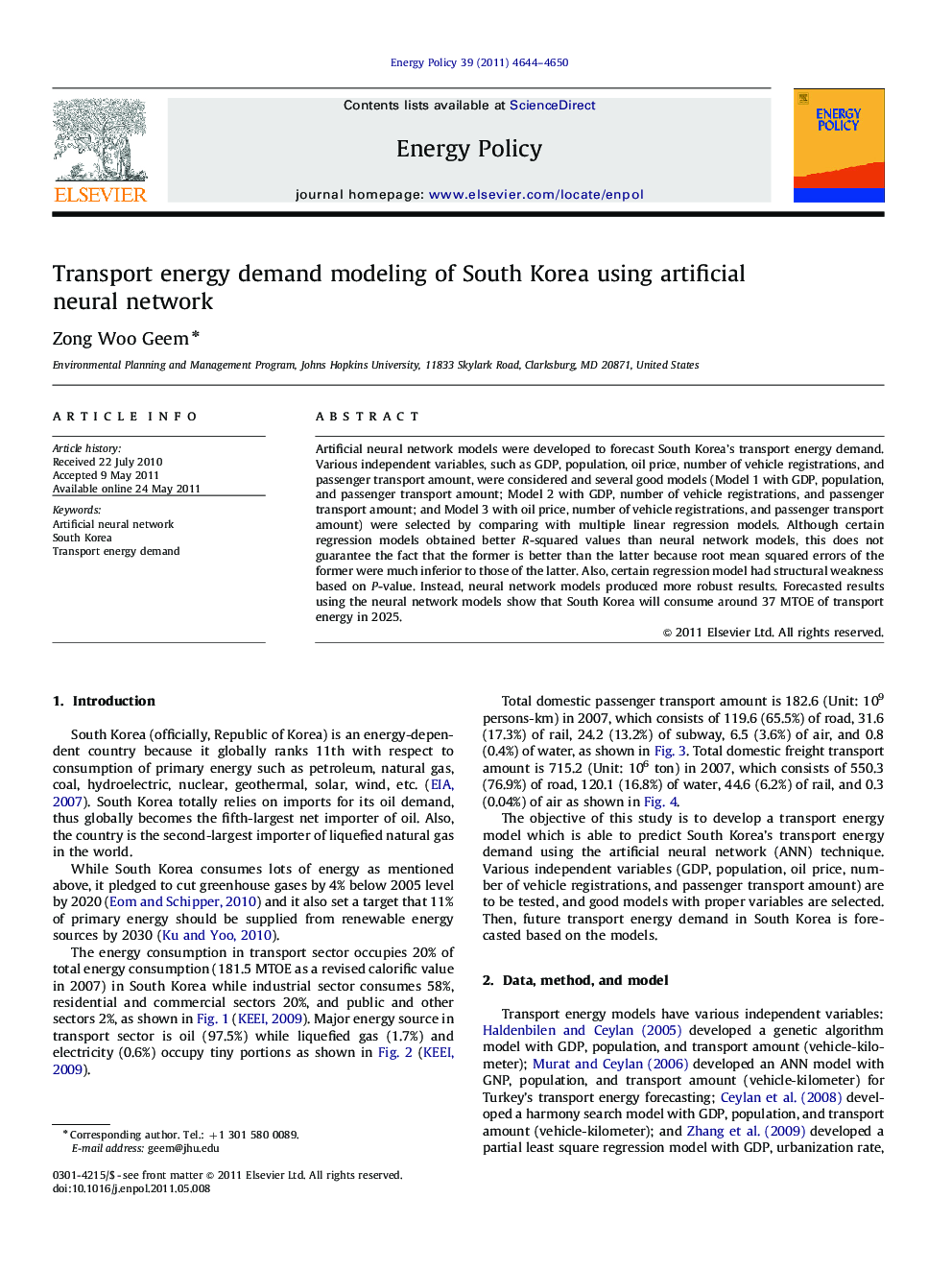| Article ID | Journal | Published Year | Pages | File Type |
|---|---|---|---|---|
| 995836 | Energy Policy | 2011 | 7 Pages |
Artificial neural network models were developed to forecast South Korea's transport energy demand. Various independent variables, such as GDP, population, oil price, number of vehicle registrations, and passenger transport amount, were considered and several good models (Model 1 with GDP, population, and passenger transport amount; Model 2 with GDP, number of vehicle registrations, and passenger transport amount; and Model 3 with oil price, number of vehicle registrations, and passenger transport amount) were selected by comparing with multiple linear regression models. Although certain regression models obtained better R-squared values than neural network models, this does not guarantee the fact that the former is better than the latter because root mean squared errors of the former were much inferior to those of the latter. Also, certain regression model had structural weakness based on P-value. Instead, neural network models produced more robust results. Forecasted results using the neural network models show that South Korea will consume around 37 MTOE of transport energy in 2025.
► Transport energy demand of South Korea was forecasted using artificial neural network. ► Various variables (GDP, population, oil price, number of registrations, etc.) were considered. ► Results of artificial neural network were compared with those of multiple linear regression.
